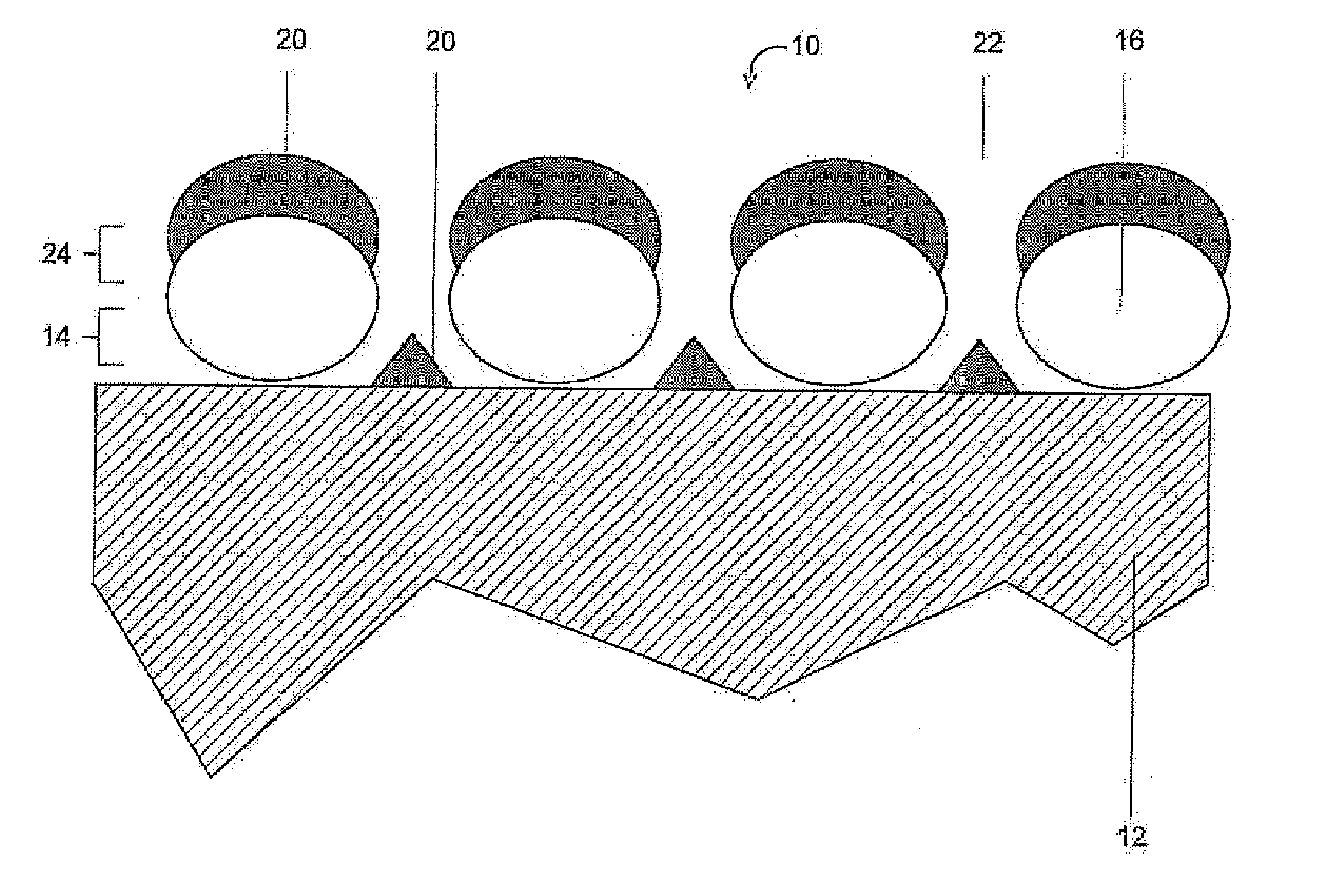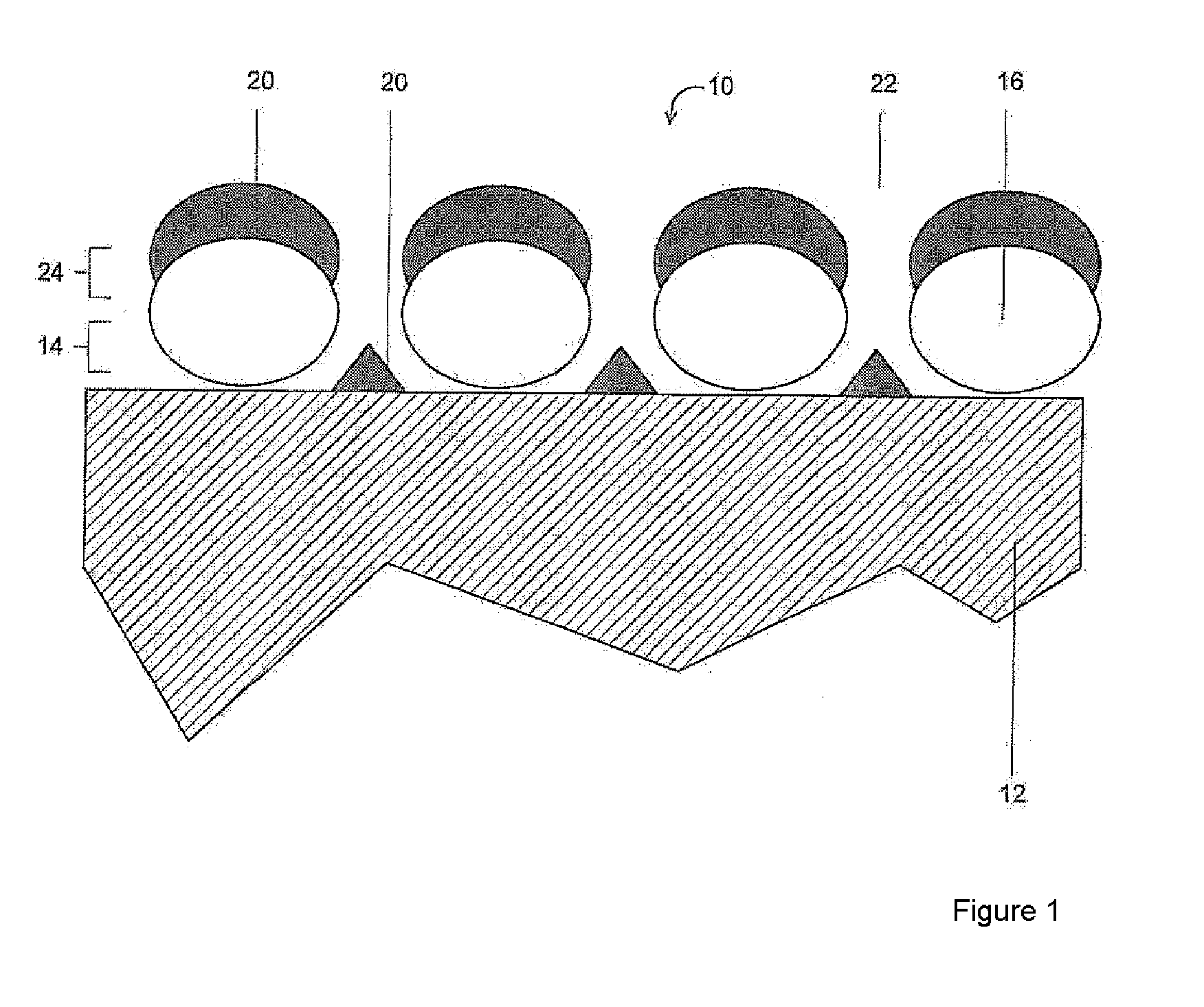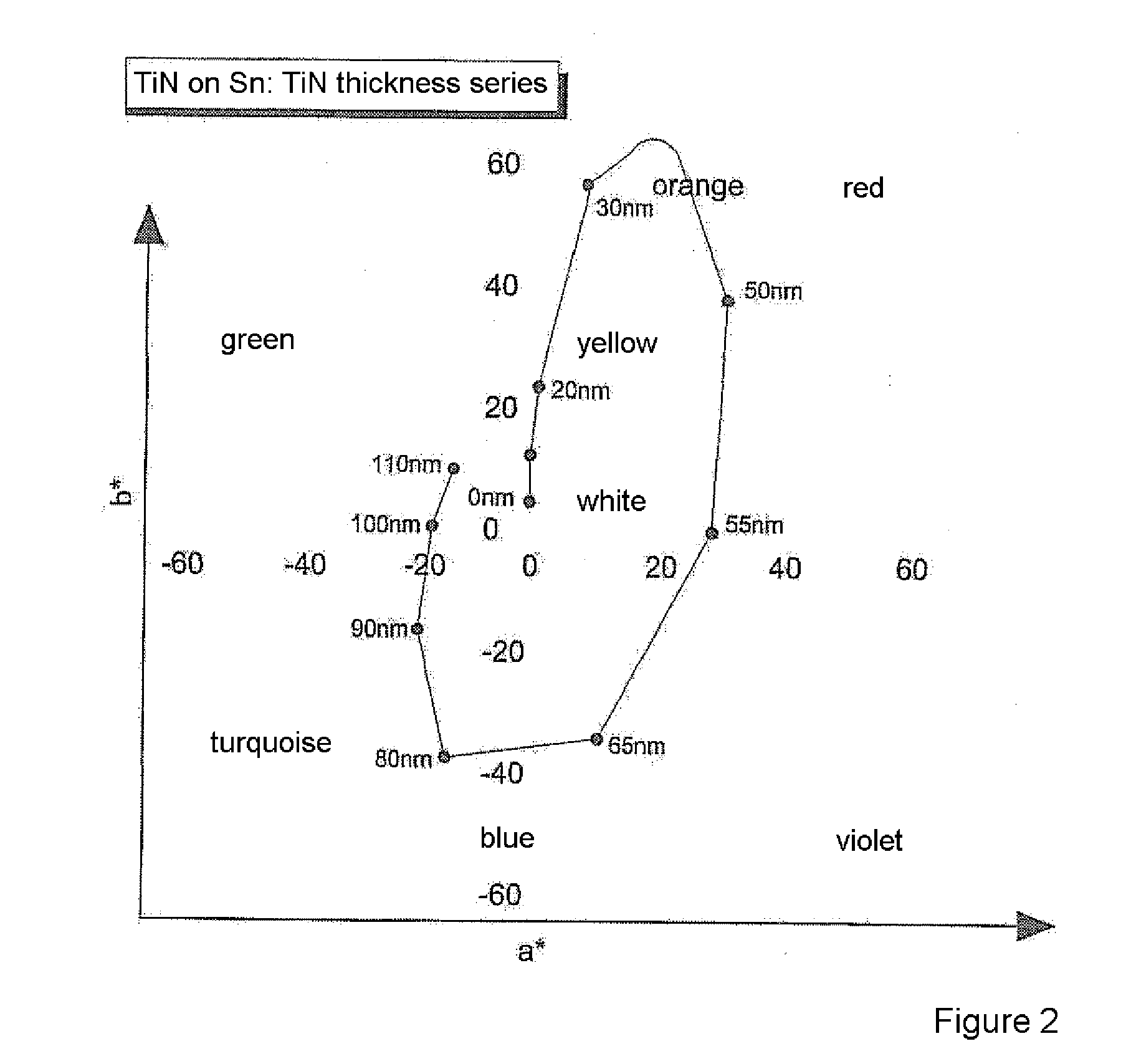Method for producing a layer system on a substrate and layer system
a technology of layer system and substrate, applied in the direction of ion implantation coating, chemical vapor deposition coating, coating, etc., can solve the problems of unfavorable transmission and reception loss, color impression is very sensitively dependent, and complicated process configuration disadvantages, etc., to achieve high sheet resistance
- Summary
- Abstract
- Description
- Claims
- Application Information
AI Technical Summary
Benefits of technology
Problems solved by technology
Method used
Image
Examples
Embodiment Construction
[0042]FIG. 1 schematically represents a layer system which is applied on a dielectric substrate 12. The substrate 12 is preferably produced from a dielectric material, in particular plastic. The substrate 12 particularly preferably consists of polycarbonate. The substrate 12 may be a housing body, for example for a mobile telephone, a laptop or another electrical or electronic device, or part of a housing. Of course, the housing may also be provided for a static device.
[0043]The layer 14 applied directly on the substrate 12 comprises islands 16, which contain a metal element or a metal alloy. The islands 16 form a discontinuous metal layer on the substrate 12. Valleys 22 are formed between the islands 16. The metal layer has a sheet resistance >10 Mohm.
[0044]A further layer 24 is applied, preferably also by means of a vacuum process, onto the metal layer 14 described above. The further layer 24 likewise comprises islands 20, so that a discontinuous layer is also formed by the furthe...
PUM
| Property | Measurement | Unit |
|---|---|---|
| reflectance | aaaaa | aaaaa |
| thickness | aaaaa | aaaaa |
| thickness | aaaaa | aaaaa |
Abstract
Description
Claims
Application Information
 Login to View More
Login to View More - R&D
- Intellectual Property
- Life Sciences
- Materials
- Tech Scout
- Unparalleled Data Quality
- Higher Quality Content
- 60% Fewer Hallucinations
Browse by: Latest US Patents, China's latest patents, Technical Efficacy Thesaurus, Application Domain, Technology Topic, Popular Technical Reports.
© 2025 PatSnap. All rights reserved.Legal|Privacy policy|Modern Slavery Act Transparency Statement|Sitemap|About US| Contact US: help@patsnap.com



